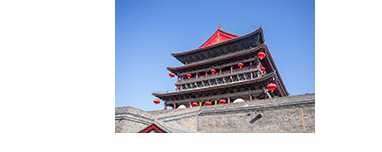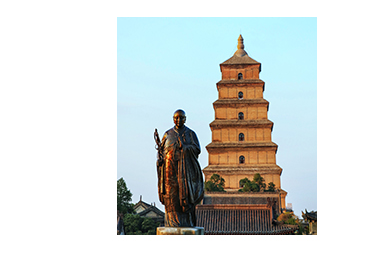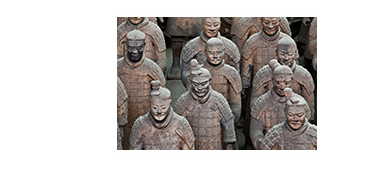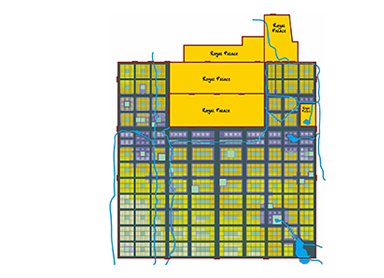|

   |
Chang'an, together with Rome, Cairo and
Athens, is known
as the four ancient capitals of the world.
During its heyday, Chang'an was one of the largest and
most populous cities in the world. Around AD 750,
Chang'an was called a "million man city" in Chinese records.
According to the census in 742 recorded in the New Book of
Tang,
362,921 families with 1,960,188 persons were counted in
Jingzhao Fu,
the metropolitan area including small cities in the
vicinity.
In the heyday of its development, it served as the center of
the eastern world, attracting a large number of foreign
envoys, monks
and businessmen.
The famous Silk Road during the Western Han and Tang
Dynasties
started from Chang'an.
Tang Chang'an City is magnificent in scale, rigorous in
layout,
symmetrical in structure and neat in arrangement.
The Suzaku Street running from north to south is a standard
central axis.
It connects Chengtian Gate in Miyagi, Suzaku Gate in
Imperial City, and
Mingde Gate in outer city, dividing Chang'an City into two
parts symmetrical
from east to west, Wannian County in the east,
and Wannian County in the east.
The west is Chang'an County, and there are two commercial
districts
in the east and west, called the East City and the West
City.
There are 11 streets in the north and south and 14 streets
in the east and west, dividing Chang'an City into 108
squares,
which are like a huge Go board.
In Tang Chang'an's population, in addition to residents,
royalty, dignitaries,
soldiers, servants, servants, Buddhist monks and nuns, and
ethnic minorities, there were no less than 30,000 foreign
merchants,
messengers, students, and monks studying abroad.
At that time, as many as 300 countries and regions came to
Chang'an and
Tang Tong's envoys.
Tang's scientific and technological culture, political
system, food fashion, etc.
spread from Chang'an to all over the world.
In addition, Western culture was digested and recreated
through
Tang Chang'an City, and then spread to neighboring countries
and regions
such as Japan, North Korea, and Myanmar.
Tang Chang'an became a gathering place for commercial and
cultural
exchanges between the West and the East in the world,
and was the largest international metropolis in the world at
that time.
In Japan, Heichengjing (now the western suburbs of Nara
City) and
Heianjing (now the center of Kyoto) highly imitated the
planning structure
of Chang'an City.
¡@
¡@
¡@ |

